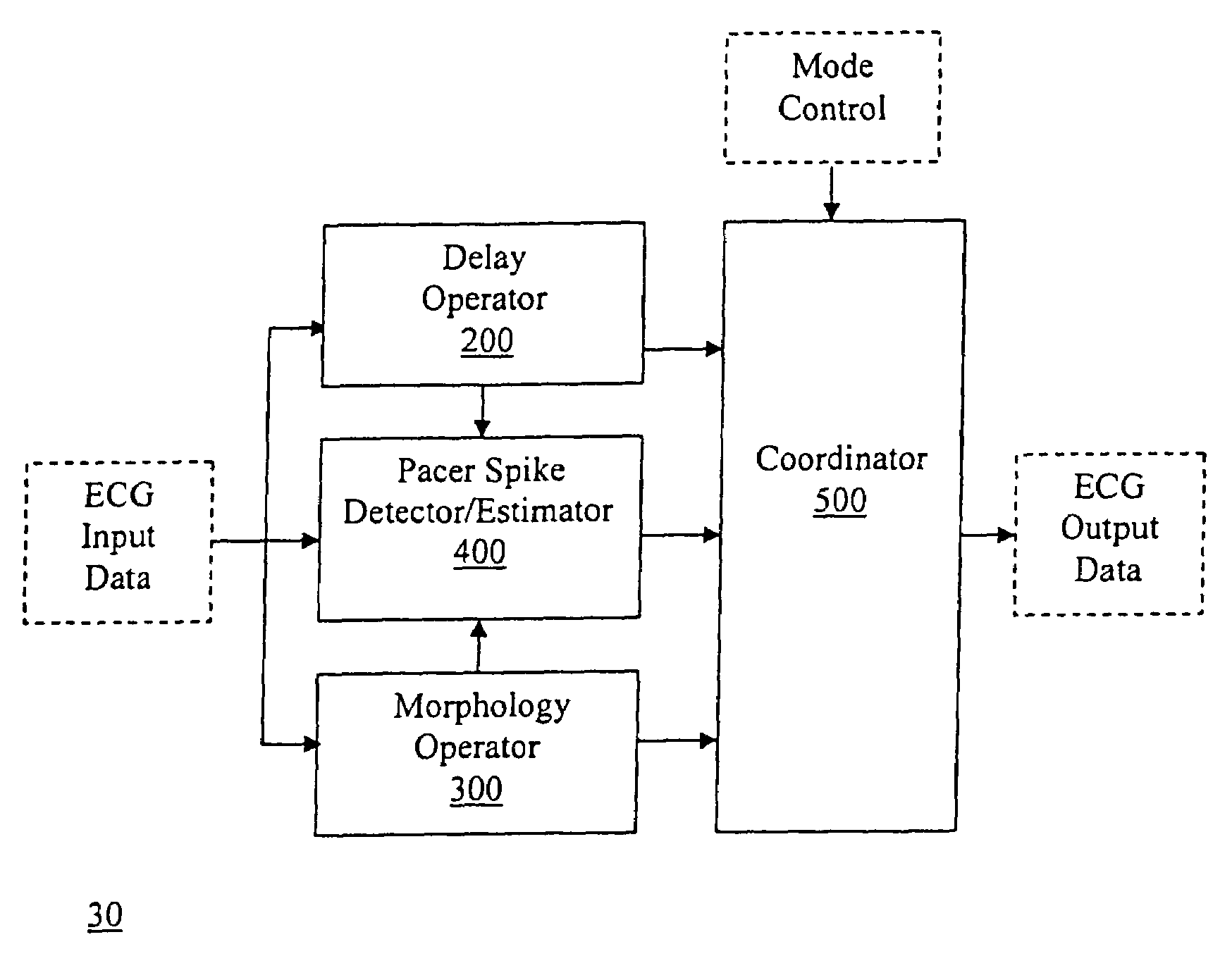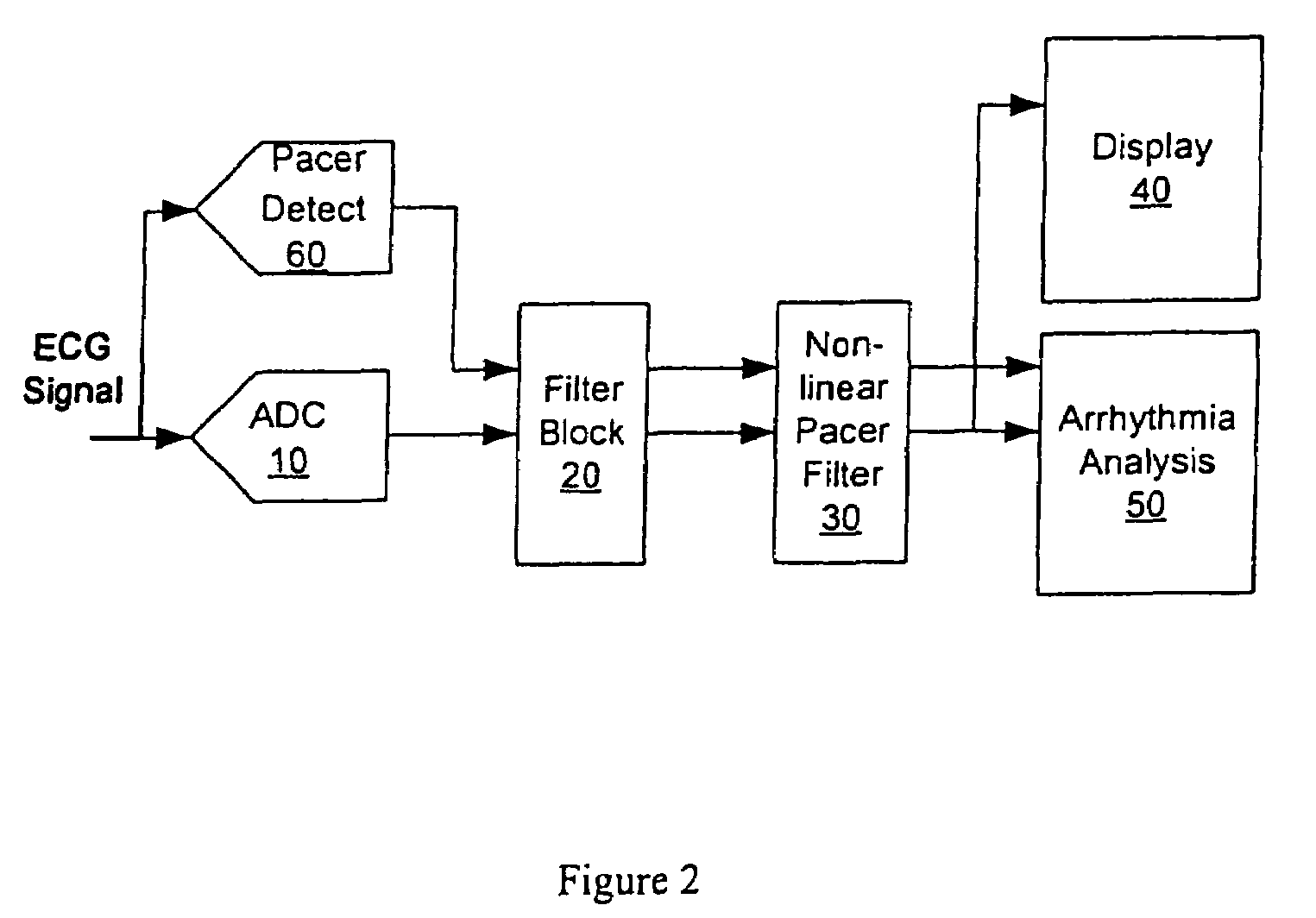Nonlinear method and apparatus for electrocardiogram pacemaker signal filtering
a technology of electrocardiogram and pacemaker, applied in the field of electrocardiogram (ecg) digital signal processing, can solve the problems of limiting the effectiveness of linear filtering techniques, adding significant cost and expense to the processing and storage of the increased flow rate and quantity of data, and not being able to meet the needs of pacer signal components
- Summary
- Abstract
- Description
- Claims
- Application Information
AI Technical Summary
Benefits of technology
Problems solved by technology
Method used
Image
Examples
Embodiment Construction
[0042]It is commonly known that characteristics of a typical ECG signal include a periodic repetition of sequential pulses or “waves” labeled “P”, “Q”, “R”, “S” and “T” each associated with stages of the heart's periodic electrical depolarization and re-polarization that controls its pumping action. The Q, R, and S pulses are contiguous and form the “QRS complex”, in which the R wave is dominant. The Q and S pulses are often indistinguishable from the noise floor.
[0043]In ECG signals over the range of patients covering neonatal to adult, these pulses have the following typical duration and amplitude characteristics.
[0044]
Pulse NameDuration (ms)Amplitude (mV)P20 to 100±0.0 to ±0.3QRS20 to 120±0.5 to ±5.0T20 to 120±0.2 to ±1.2
The preceding pulse dimensions are in sharp contrast with that of a typical pacemaker signal pulse that ranges in amplitude from approximately ±2 mV to ±700 mV and in duration from about 0.1 ms to 2 ms. Because the pacer signal spike is so much shorter in duratio...
PUM
 Login to View More
Login to View More Abstract
Description
Claims
Application Information
 Login to View More
Login to View More - R&D
- Intellectual Property
- Life Sciences
- Materials
- Tech Scout
- Unparalleled Data Quality
- Higher Quality Content
- 60% Fewer Hallucinations
Browse by: Latest US Patents, China's latest patents, Technical Efficacy Thesaurus, Application Domain, Technology Topic, Popular Technical Reports.
© 2025 PatSnap. All rights reserved.Legal|Privacy policy|Modern Slavery Act Transparency Statement|Sitemap|About US| Contact US: help@patsnap.com



